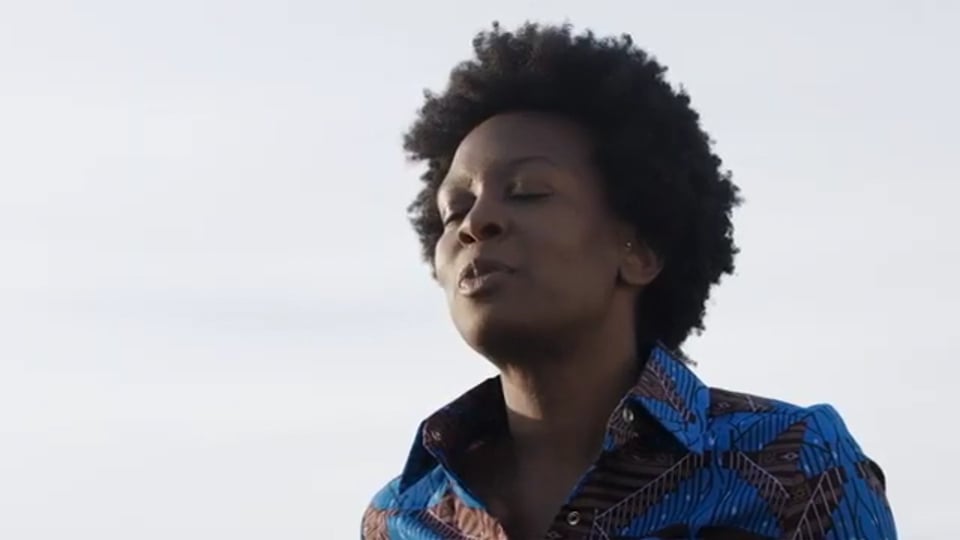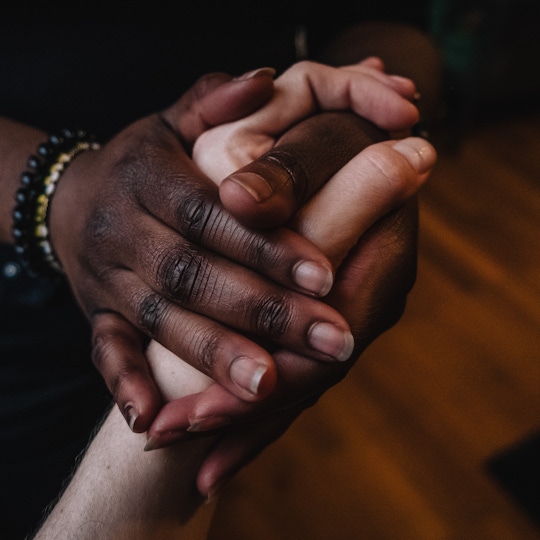Maker Series - Chapter 32
Welcome to Chapter 32 where we meet Charlotte Ginsborg, London-based filmmaker, Vanessa Coquelle, a French photographer living in Belgium with an eye for the people and Hugo Rodríguez Rodríguez, art director and visual developer at Glassworks Amsterdam.

Ballad of Nana Doline
Charlotte Ginsborg, Filmmaker, UK
With a background in fine art and photography Charlotte's films combine documentary, fiction and performance to create rich multi-layered portraits of diverse communities and engaging individuals.
Fabrik: Hi Charlotte! Tell us a little bit more about yourself and your work.
Charlotte Ginsborg: I am an independent filmmaker from London working across a range of genres. I come from a background in fine art and my first films screened in galleries. My work often fuses documentary, narrative and performance. I’m fascinated in how diverse communities inhabit contemporary cities, and I delight in revealing people’s inherent creativity in front of the camera through, song, dance and movement. More recently I have been developing documentaries about sports people; boxers and divers. I have paired them with choreographers to develop dance sequences they perform in the films, capturing them moving through highly cinematic locations.
Fabrik: would like to go a little bit behind the scenes regarding your collaboration with J.S.Ondara. Tell us a little bit more about the process. How did it come to fruition? Any obstacles and breakthroughs?
Charlotte Ginsborg: I replied to a call to direct a promo for J.S.Ondara who had written and recorded a new album Folk n’ Roll Vol 1: Tales of Isolation whilst in lockdown. I didn’t know his work but was immediately moved by his lyrics. I live in a housing co-operative in London which looks on to the River Thames, we had been having weekly sing alongs during lockdown where we came on to our balconies and roof garden and sang to and with each other to raise our spirits. This was the inspiration for the video for the Ballad of Nana Doline, the ten minute song that closes the album. The promo was filmed entirely in the co-op featuring its residents lypsyncing the words of the song to camera.
Onadara’s lyrics chimed with common global experiences of the pandemic, the emotions that many of us are collectively experiencing. It felt like we had to capture the spirit of the moment, hopefully a greater understanding of humanity, an increased sense of empathy, and more tolerance of the differences between us. Although the song is pretty sombre, I wanted the promo to contain a sense of hope, a portrait of the human spirit in the face of adversity. I would like it to nod to the stresses we have all felt when negotiating lockdown, but also the joy or delight we as human beings feel when creating, singing and expressing ourselves.
Usually I work with a bigger team but this time it was just me shooting with one assistant, working with natural light, but I think this helped the residents, all non professionals, to relax in front of the camera. Due to the fast turn around time, and the physical distance between us, there was actually less direct communication throughout the process between Ondara, and myself compared to working in pre Covid times.
The length of the track was the biggest challenge, especially as non-actors had to learn the lyrics. Ondara's sophisticated poetic language is haunting and is what makes his music so strong, but the lyrics and timings were challenging for people to learn. To ensure the concept could sustain the length I cast eleven of the residents, meaning there was a great range of personalities that would help sustain the viewers’ interest. For me the promo is a series of intimate portraits, or character studies, as well as a portrait of the rather amazing building and community that we live in.
The biggest breakthrough for me was realising that I didn’t have to control the process too much, by letting the performers interpret Ondara’s words how they wanted to, wearing what they chose, and putting their own emotions in to the singing, I think we achieved strong, engaging, heart felt performances.

Teach 'Em Kids
Vanessa Coquelle, Photographer, Belgium
Vanessa or, according to her own words Jeff Buckley impersonator with a camera, transforms the ordinary everyday into an extraordinary everyday exuding life.
Fabrik: Hi Vanessa! Tell us a little bit more about yourself and your work.
Vanessa Coquelle: My name is Vanessa Coquelle. I teach, I write and I shoot. I left France and started teaching in 2012 right after my mother passed away. I’m a language teacher in Schaerbeek, one of Brussels' most multicultural neighbourhoods. I had no idea what to expect when I got that teaching job, but the sense of warmth my students gave me exceeded all my expectations - to the point where, contrary to most of my colleagues, I feel safer in my classroom with them than in the staff room. It was supposed to be a substitute job. I never left.
I started shooting photography at the very beginning of 2015. Before that, I was the annoying person who would take pictures at shows with her cellphone. I’ve always been into shows, full front stage, diving deep in the sound. Most of the time, there were live photographers around. I used to envy them and their alleged ease to convey whatever was going on in there, compared to a girl who would spend hours writing about music on her way back home.
When I bought my first camera, the first thing I did was carry it along to a show. It was a Triptykon concert. There was a guy playing the guitar called V. Santura who was wearing some kind of corpse paint that was so well done it looked like a freaking Kardashian contouring. I was blown away. But as far as photography goes, I felt nothing special. Nothing at all.
That night, it was clear live photography wasn’t meant to be. I never felt comfortable with the position it puts me in. I’m much more into people, portraits, candids. People I can feel close to. I got myself a very small camera, no zoom, no flash. All I wanted was to feel close to the people who caught my eye. I don’t think I ever took photography seriously. People took it seriously for me, and it just freaked me out.
Fabrik:I would like to go a little bit behind the scenes regarding your series 'Teach ’Em Kids'. What was the inspiration behind that? Tell us a bit more about the process.
Vanessa Coquelle: ”Teach ’em kids” is the result of a 4-year long constant diary of a two-way trust between my students and me. It’s a series I edited at the very end of a burn out, right before going back to work - only to share it a year later. Long story short, I needed to remember why I loved my teaching job so much. It’s a dozen pictures among many more - thousands, maybe, I stopped counting.
”Teach ’em kids” was shot between classes, choir sessions, field trips, football games and other tiny bits of life outside school. There’s the one who asked me what the Pride was about and ended up bringing half a class with her for support. There’s the one who went to the woods for the first time of his life at the age of 14. There’s the one I went to the dentist’s with as a joke when she decided to take her braces off. There’s the one who organized a whole surprise birthday party for me. There’s the one who came to kick my ass when I was on medical leave so I could go back to work and kick some more asses.
There’s something really peculiar about the relationship I have with them. I couldn’t teach the way I teach in France, and I couldn’t teach the way I teach anywhere else in Brussels, with other kids. Sometimes they call me ”Coach”, sometimes they even call me by my name, I don’t care - because calling you ”Miss” isn’t always how respect works. I’d rather have them develop their own curiosity than giving them detention for a forgotten homework. I call them my human tiramisu, because they always lift my spirit, and here’s what I learned from them: teaching is a two-way street.

Pelota
Hugo Rodríguez Rodríguez, Glassworks Creative Studio Director, Netherlands
Glassworks' Creative Studio director Hugo Rodríguez Rodríguez commands all the colors of the rainbow in this dreamy companion to Khruangbin’s latest track.
Fabrik: Hi Hugo! Tell us a little bit more about yourself and your work.
Hugo Rodríguez Rodríguez: Hi my name is Hugo and officially I'm the art director and visual developer at Glassworks Amsterdam. I'm a link between the client's vision and our team visual translation, making sure clients are as happy as possible but always keeping an eye on learning something new and exciting from each project.
From conception to final look is part of my work but I really enjoy everything in the middle; sketching, animating, colour testing, exploring in general to make sure things look as artistic as possible, getting all the technical support from the different departments in order to deliver fresh visuals.
Fabrik:I would like to go a little bit behind the scenes regarding your most recent work for Pelota.What was the inspiration behind that? Tell us a little bit more about the process. Any challenges and breakthroughs?
Hugo Rodríguez Rodríguez:This project is a product of this time, a really crazy one. First of all, I just want to thank everyone, not just at GlassWorks, but also the band and W+K Amsterdam. Alvaro Sotomayor came to us just when everything was about to close down. At that moment we didn't know how the situation would translate into our business and it's not every day you get the chance to work with such an amazing band.
Alvaro had a clear idea about a kid walking in the middle of the desert and traveling through different worlds. From there and what I could understand from the lyrics we started building up, more than usual the deadline was short and resources were limited but we as a team really wanted to get our hands on it even though we had all our team working remotely. It was also a great chance to test some new review software and visual feedback.
We agreed on a simplistic but colourful aesthetic that will work with Khruangbin's style. We were super lucky with them as we had all the freedom and because they already had a powerful visual brand with their wigs and beautiful wardrobes so we already had a really interesting starting point.
Due to all the limitations, we first approached it as just static drawings layered that will loop with a moving camera but then music took us and we went crazy with the literal translation of the song as the kid is a "PELOTA" and ended up just reusing 2 animations across the whole film; doing cel animation at 24 fps with full colour, 3d assets , animations in different software, integration, etc.. The nightmare of a producer. But we were lucky having Belen and Katie on board tracking and connecting all the pieces of this psycho puzzle and Nils commanding all the post-production work and all of them making sure I didn't go crazy and we are able to deliver something full of love.
We Internally trained people to work on cleaning up, gave a sequence to W+K studio to have fun with and literally got all the hands we could, even asking musician friends to record hand reference for a track that was never played out of the studio. We all felt lucky with this one and had room to explore and we put a piece together as a team that makes me feel proud not of the result, but the team that made it happen.
Soy una pelota



